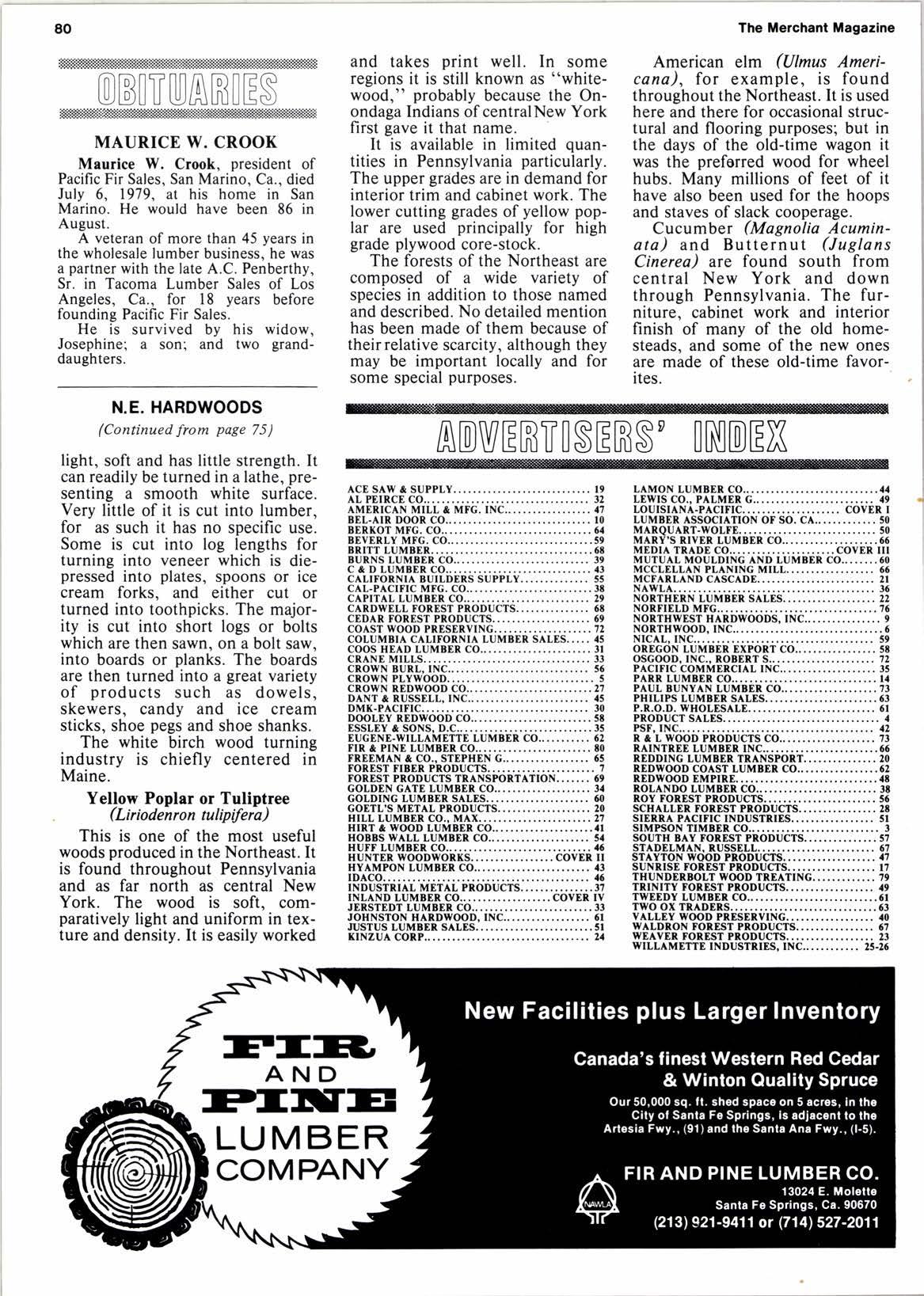
1 minute read
OtsilTUARIES
MAURICE W. CROOK
Maurice W. Crook, president of Pacific Fir Sales, San Marino. Ca., died Jufy 6, 1979, at his home in San Marino. He would have been 86 in August.
A veteran of more than 45 years in the wholesale lumber business. he was a partner with the late A.C. Penberthy, Sr. in Tacoma Lumber Sales of Los Angeles, Ca., for 18 years before founding Pacific Fir Sales.
He is survived by his widow, Josephine; a son; and two granddaughters.
N.E. HARDWOODS
(Continued from page 75) light, soft and has little strength. It can readily be turned in a lathe, presenting a smooth white surface. Very little of it is cut into lumber, for as such it has no specific use. Some is cut into log lengths for turning into veneer which is diepressed into plates, spoons or ice cream forks, and either cut or turned into toothpicks. The major- ity is cut into short logs or bolts which are then sawn. on a bolt saw. into boards or planks. The boards are then turned into a great variety of products such as dowels, skewers, candy and ice cream sticks, shoe pegs and shoe shanks.
The white birch wood turning industry is chiefly centered in Maine.
Yellow Poplar or Tuliptree
(L iriodenro n tulipifera )
This is one of the most useful woods produced in the Northeast. It is found throughout Pennsylvania and as far north as central New York. The wood is soft, comparatively light and uniform in texture and density. It is easily worked and takes print well. In some regions it is still known as "whitewood," probably because the Onondaga Indians of centralNew York first gave it that name.
It is available in limited quantities in Pennsylvania particularly. The upper grades are in demand for interior trim and cabinet work. The lower cutting grades of yellow poplar are used principally for high grade plywood core-stock.
The forests of the Northeast are composed of a wide variety of species in addition to those named and described. No detailed mention has been made of them because of their relative scarcity, although they may be important locally and for some special purposes.
American elm (Ulmus Americona), for example, is found throughout the Northeast. It is used here and there for occasional structural and flooring purposes; but in the days of the old-time wagon it was the preforred wood for wheel hubs. Many millions of feet of it have also been used for the hoops and staves of slack cooperage.
Cucumber (Magnolia Acuminata) and Butternut (luglans Cinered are found south from central New York and down through Pennsylvania. The furniture, cabinet work and interior finish of many of the old homesteads. and some of the new ones are made of these old-time favorites.










